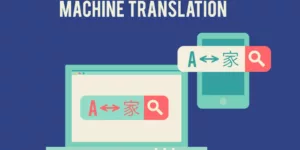Are you familiar with the term “Machine Translation(MT)”? Well, it can be described as the automatic translation of speech to a text by computer software without human intervention.
History of machine translation
Research into machine translation began in the 1950s, and one of the earliest known projects was the Georgetown experiment, which automatically translated about sixty Russian sentences into English successfully. Over the next few years, numerous projects involving MT were carried out in different countries.
In the 1980s, the computational power available had increased, and as a result, interest in statistical models for machine translation had grown. Between the late 1990s and the early 2000s, machine translation hit the internet. It was spear-headed by Systran, a company which offered the conversion of small texts free of charge. By 2012, machine translation had become so much sophisticated and relied upon that on that year. An estimate points out that texts translated by Google Translate on a single day were enough to fill a million books.
How does machine translation work?
There are different types of machine translation engines. They include:
• Rules-based system. It involves the use of language and grammar rules combined with dictionaries. It requires unique industries and disciplines; thus specialist dictionaries are made. The regulations developed can add other terms to improve the quality of translation by overriding the machine translation.
• Statistical system. It analyses huge data amounts of language pairs so as learn to translate. It’s readily applicable in specific disciplines and industries because it’s trainable by use of data belonging to the particular sector.
• Neural Machine Translation. It is a relatively new method of machine translation, and it deals on large neural networks. This method is fast gaining popularity because trained Neural MT systems that have been yielding better performances in numerous language pairs compared to other systems.
• Post machine editing. It is where the translations that are generated by machines are corrected by humans to achieve final results that are acceptable. Most industries use post-editing to improve the efficiency of translation results. Post editing has two categories which include;
• Light post-editing. It involves only the smallest intervention required to help the final user of the information make sense of it.
• Full post-editing. It consists of a higher level of human interference with the aim of reaching a certain degree of quality agreed upon by the client and post editor.
Machine translation in business
Over the past years, machine translation has made tremendous strides resulting in a wide range of its application. Its efficiency and reliability has made programs such as Microsoft API and Translate.com, revolutionize businesses in all fields in some ways which include;
• The use of translation memory to speed up business projects by reducing the time spent re-translating a phrase.
• Using MT to research target markets located in areas that speak a different language
• Creating the first draft for professional translators since it is easier for them to correct mistakes made by the MT than to do the whole translation themselves.








